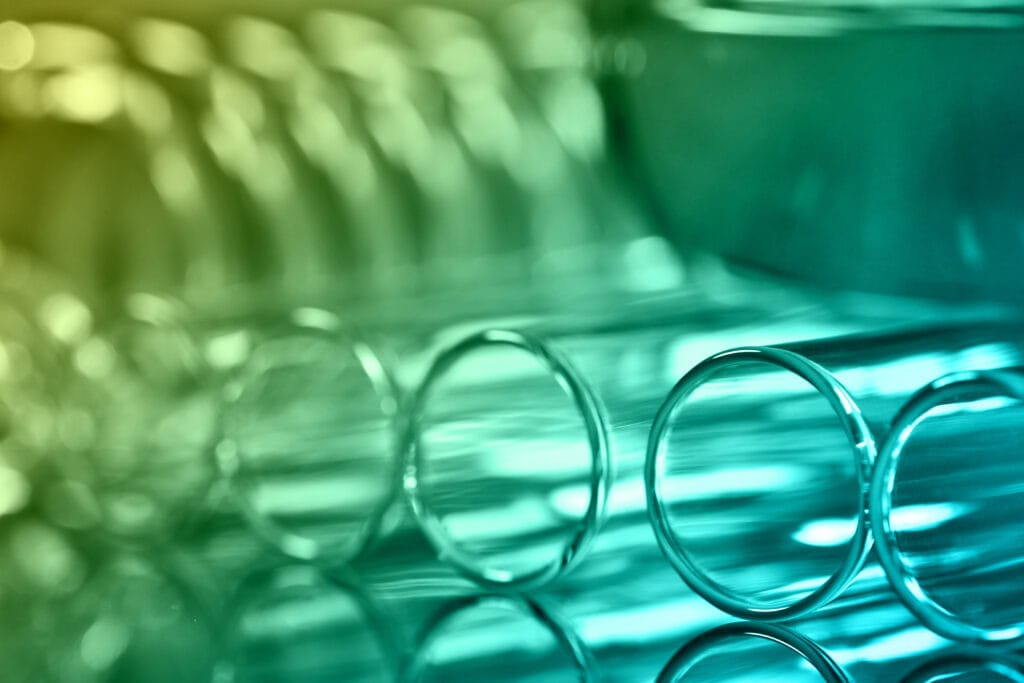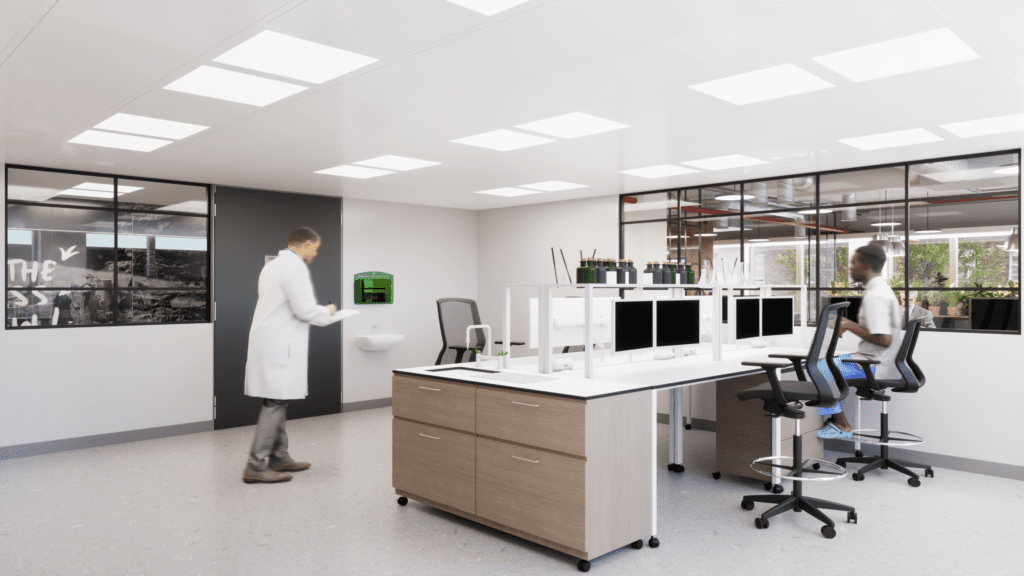What we do
Combining our three core specialisms with cross sector experience from a world-class team, we transform businesses through the built environment and enhance the way people work.
Find out more about green lab certifications for laboratory workspaces.
The global gold standard of laboratory sustainability now involves gaining a certification of ‘being green’ as best practice. With varying accreditation providers sprouting across the world, the alliance of green laboratories continues to expand and with it does the sustainable culture in science.
The most credible way to deliver the systems of change in science is to obtain green laboratory certifications. Having an independent third party ratify your green credentials across several diverse topics relating to water, energy, waste, social well-being, automation and more.

Green-certified labs are laboratories which make tangible and visible efforts to reduce their carbon footprint without compromising on the quality of research, safety or productivity.
These laboratories are designed or refurbished in such a way that their performance can be examined for initial attainment of a green certification and monitored for ongoing adherence by reputable organisations.
These programs focus on empowering, encouraging and recognising the progress that private and public sector labs are making towards fulfilling their ESG goals as well as the sustainable practices they are executing. Reducing, wherever practicable, the use of energy, water and materials whilst minimising physical waste and improving efficiency.
Taking the steps to obtain green laboratory certification embeds, across the entire organisational structure, accountability for a raft of long-term strategies which address sustainability, physical design, and employee wellbeing.
With accreditations being internationally recognised, many lab owners confer their environmental credibility whilst transcending borders. This is of the utmost importance within the life sciences sector as R&D, pharmaceuticals and biotechnology make movements worldwide.

Current trends in laboratory design place emphasis on energy-efficiency whilst enabling human-centred cultures which genuinely and actively drive the well-being of everyone within the organisation.
Key outputs of strategic sustainable design are:
Incorporating a green lab certification can bring with it many benefits for wider corporate businesses:
Placing a lab at the forefront of cutting-edge innovation opens a business up to new and more effective methods of quality control, novel technologies, and new processes.
Accreditations that mark a lab as green, recognise the ongoing dedication to a long-term sustainable strategy. A business becomes accountable not only for its efforts at present but for the longevity and upkeep of those efforts in the future.
Resources are paramount in the current economic market. Making regular savings with water and energy whilst reducing waste and carbon emissions at every opportunity mitigates the future effects of lab processes, protects an organisation’s financial bottom line and partakes in a wider global commitment.
These badges of assurance not only improve staff retention, employability and partnerships but also demonstrate the ongoing quality and performance of a lab, which ultimately makes a business more attractive to prospective employees.

Some accreditation schemes operate throughout the process of design and fit-out, whilst others work retrospectively and involve looking at the features present and how they impact sustainability.
Each recognition system certifies what it expects as sustainable or social conduct and accredits accordingly. Aligning business objectives with the correct certification provider is key to maximising the likelihood of incorporating continuous sustainable outcomes in the prolonged future.
Whether it be a local certification such as SKA or BREEAM or something on a more global scale like LEED or WELL, these days there are a range of green certifications available to commercial space occupiers. Everyone’s business needs are different and there is no one size-fits-all system to assessing your green credentials. Working closely with you we can assist in making initial assessments and choosing the best green certification to suit your lab and workspace requirements.
At AIS we have in-house sustainability experts who can be integrated into your project team and be on hand throughout the design and build process to assist you in attaining a range of green certifications. Our experts offer strategic and technical green building advisory services to help our clients manage risk and achieve their desired sustainability targets.
If you want to learn more about which green certification might work best for your laboratory, take these first steps with us and reach out to a member of the AIS Sustainability team here.